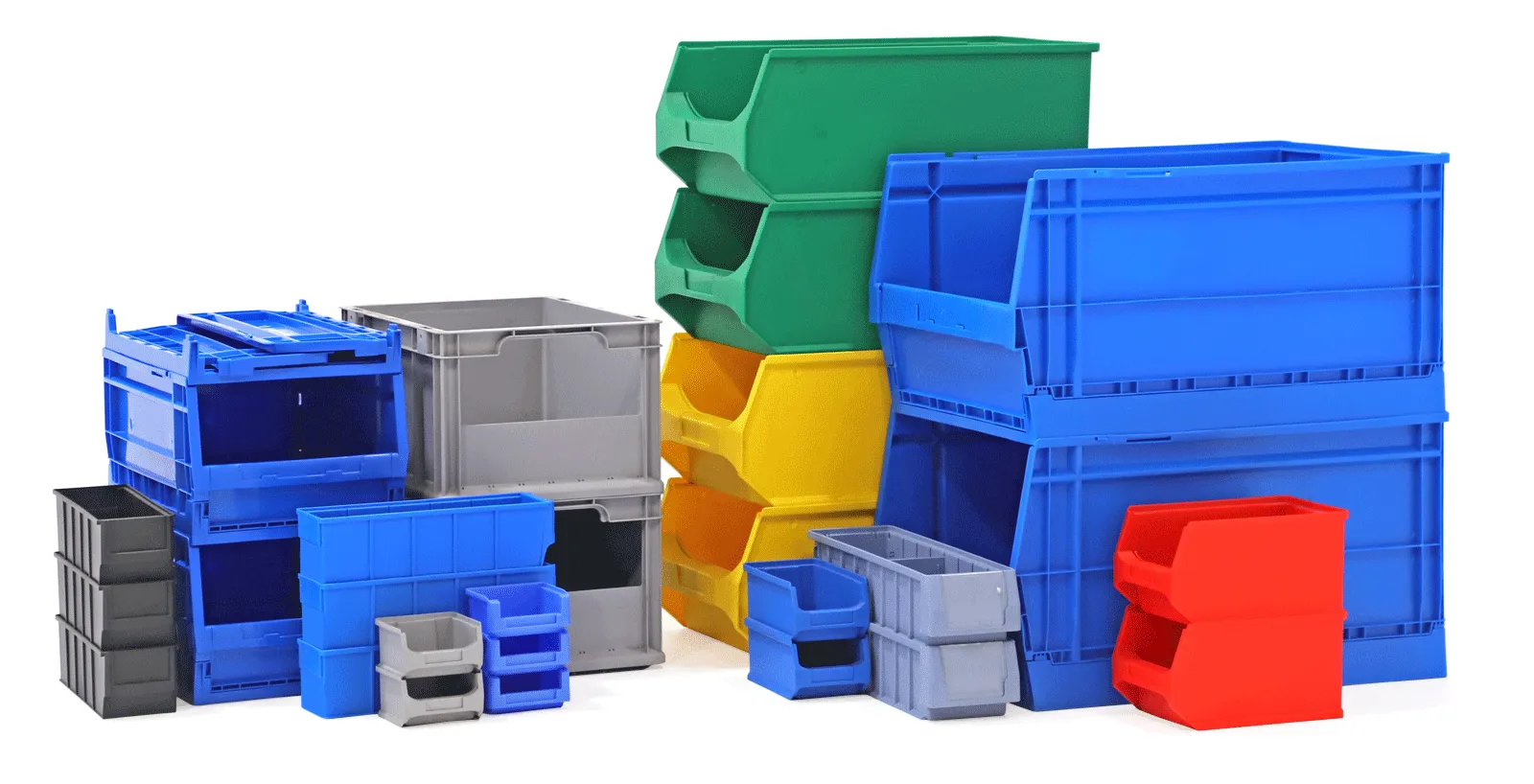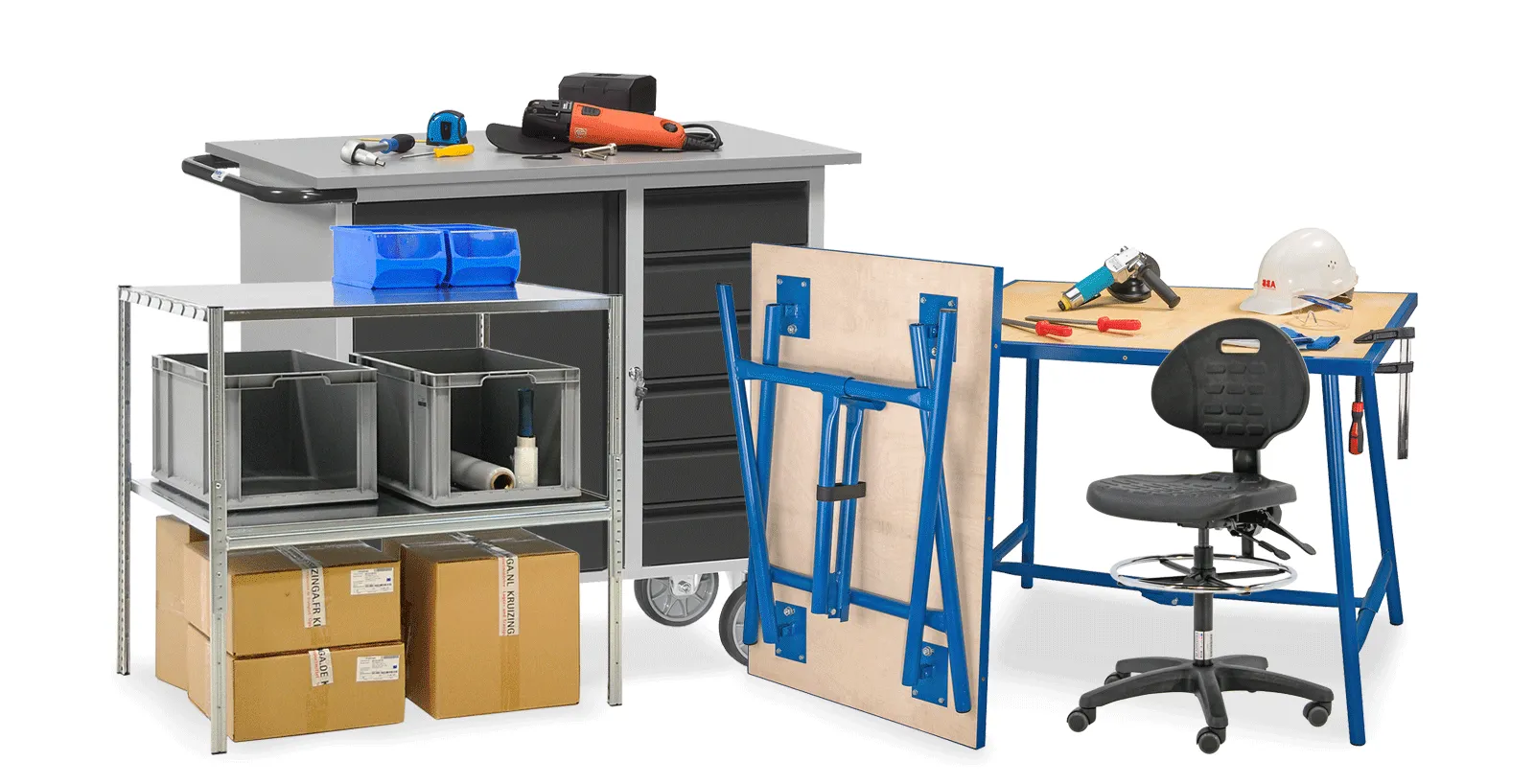Wheel assistance
High-quality wheels are essential to ensure handling equipment is used effectively. We offer different types of wheels and bearings, depending on surface, indoor and/or outdoor use, weight of the items to be transported or special applications such as electrically conductive and chemical resistance.
Choosing the correct wheel in 5 steps
When choosing a wheel, you should take into account the following 5 aspects: the required load-bearing capacity, the type of surface on which it will be used, the correct size of the wheel, whether it should be a swivel wheel or fixed wheel and the quantity required. We discuss these aspects below:
Step 1. Determine loading capacity
Because it is possible for a wheel to briefly lose contact with the floor on an uneven surface, you must calculate the load-bearing capacity for 3 wheels.
|
Loading capacity (KG) = empty weight of the transport unit + maximum load : 3 |
* Please note: This calculation is based on the use of 4 wheels and is only applicable under normal operating conditions.
Step 2. Correct wheel for the type of tread
The choice of tread depends on the surface such as thresholds, bumps, grooves and environmental conditions such as temperature fluctuations and chemical agents.
Rolling resistance: Very little.
Noise: Quiet on even surfaces.
Hardness: Slightly soft.
Dirt sensitivity:
Insensitive.
Bearings: Ball bearings.
Non-marking: Yes.
Surface: Suitable for even surfaces.
Characteristics: Cost-effective and smooth-running wheels on even surfaces, mark-free on sensitive surfaces.
Max. obstacle height: 5% of the castor diameter.
Rolling resistance: Very little.
Noise: Noisy on almost all surfaces.
Hardness: Very hard.
Dirt sensitivity: Very sensitive.
Bearings: Roller bearings.
Non-marking: Yes.
Surface: Suitable for even surfaces.
Characteristics: Cost-effective wheels with a high load-bearing capacity, very little operational comfort. Extensively resistant to salt, acids and alkalis.
Max. obstacle height: 2,5% of the castor diameter.
Rolling resistance: Average.
Noise: Extremely quiet on all surfaces.
Hardness: Very soft.
Dirt sensitivity:
Insensitive.
Bearings: Roller bearings.
Non-marking: Optionally possible.
Surface: Suitable for even and uneven surfaces.
Characteristics: Ideal for use on poor surfaces, also for outdoor use.
Max. obstacle height: Particularly easy at rolling over obstacles.
Rolling resistance: Low.
Noise: Quiet on nearly all surfaces.
Hardness: Soft.
Dirt sensitivity:
Insensitive.
Bearings: Roller bearings.
Non-marking: Optionally possible.
Surface: Suitable for even and slightly uneven surfaces.
Characteristics: Cost-effective and universally applicable wheels for an average load-bearing capacity.
Max. obstacle height: 5% of the castor diameter.
Electrostatically conductive
TPE wheel
Rolling resistance: Very little.
Noise: Quiet on even surfaces.
Hardness: Slightly soft.
Dirt sensitivity:
Insensitive.
Bearings: Ball bearing.
Non-marking: Yes.
Surface: Suitable for even surfaces.
Characteristics: Special wheels to prevent static charging.
Max. obstacle height: 5% of the castor diameter.
Rolling resistance: Low.
Noise: Quiet on nearly all surfaces.
Hardness: Very hard.
Dirt sensitivity: Very sensitive.
Bearings: Roller bearing.
Non-marking: Yes.
Surface: Suitable for even and slightly uneven surfaces.
Characteristics: Cost-effective wheels for average load-bearing capacity, mark-free, can therefore also be used on sensitive surfaces.
Max. obstacle height: 5% of the castor diameter.
Rolling resistance: Very little.
Noise: Quiet on nearly all surfaces.
Hardness: Soft.
Dirt sensitivity: Limited sensitivity.
Bearings: Ball bearings.
Non-marking: Yes.
Surface: Suitable for even and slightly uneven surfaces.
Characteristics: Particularly high-quality and resistant wheels with a high load-bearing capacity; resistant to many aggressive substances.
Max. obstacle height: 2,5% of the castor diameter.
Rolling resistance: Very little.
Noise: Extremely quiet on all surfaces.
Hardness: Very soft.
Dirt sensitivity:
Insensitive.
Bearings: Ball bearings.
Non-marking: Yes.
Surface: Suitable for even and uneven surfaces.
Characteristics: Very comfortable due to slight softness; good for frequently rolling over grooves and thresholds. Long lifespan.
Max. obstacle height: 5% of the castor diameter.
Step 3. The correct wheel diameter
75 to 150 mm: Simplifies the movement of the wheel.
160 to 400 mm: Compensates for unevenness of the surface and is suitable on loose ground.
Dimensions plate mounting:
75 t/m 125 mm: 105x85 mm.
150 t/m 200 mm: 135x110 mm.
300 t/m 400 mm: Does not apply.
Did you know that? The larger the wheel diameter, the less force is needed to start rolling. A large diameter wheel is also much more suitable for rolling over obstacles such as thresholds and potholes.
Steps 4 and 5. Mobility, wheel direction and arrangement
When purchasing a wheel, please pay attention to how your transport unit will be used. Is this stable or tilting? What is your desired level of manoeuvrability? And what is your required wheel direction.
4 Fixed wheels
No manoeuvrability, suitable for light loads and stable material.
2 Fixed wheels and 2 swivel wheels
Moderate manoeuvrability, suitable for light loads and stable material.
4 Swivel wheels
Highly manoeuvrable, suitable for light loads and stable material.
4 Swivel wheels + 2 fixed wheels
Highly manoeuvrable, for heavy loads and tilting material.
4 Fixed wheels
No manoeuvrability, suitable for light loads and tilting material.
2 Swivel wheels + 2 fixed wheels
Excellent manoeuvrability, suitable for light loads and tilting material.
Types of wheel bearings
Do you have problems finding the product or do you need advice?
Would you like to receive direct advice about the different wheels in our range, or about the service we can offer you? You can contact us by telephone or e-mail with your questions about wheels. We are happy to help you find the right wheel!
Are you undecided?
Please feel free to contact us!




































































